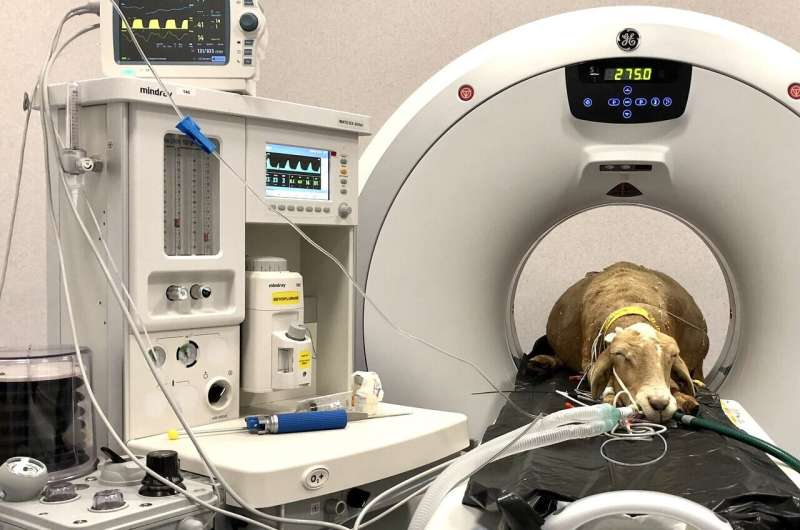
Epidural anesthesia is a technique that requires great accuracy to avoid accidentally puncturing the dura mater, one of the three meninx that protect the central nervous system. The cerebrospinal fluid, which feeds the nervous system, is located under the dura mater. Leaks of this fluid can cause strong headaches that can be crippling and delay recovery following an intervention with this anesthetic technique. They are especially severe in women who suffer this complication after receiving an epidural while giving birth.
Valencian researcher Carlos García Victoria has patented a device that decreases the leak of cerebrospinal fluid if it accidentally punctures the dura mater. Its successful validation in an ovine model, a necessary prior step for its application on humans, has been performed at the Veterinary Clinical Hospital by lecturers from the Department of Medicine and Animal Surgery of the Faculty of Veterinary Medicine and the Clinical Veterinary Hospital of the CEU Cardenal Herrera University (CEU UCH) José Ignacio Redondo, Mireia García Roselló, Álvaro Gutiérrez and Vicente Esteve.
The designed device can be applied immediately after detecting the accidental puncture of the dura mater, sealing the cerebrospinal fluid leakage in a simple way, preventing the subsequent headaches, which can last several days or even weeks, extending hospital stays and recovery following the intervention.
Prior step for its use on humans
The results of its efficiency on an animal model have just been published in Regional Anesthesia and Pain Medicine. According to anaesthesiology lecturer José Ignacio Redondo says, “The design of this animal model has made it possible to successfully validate the efficiency of the device. This is the first necessary step for its use to be authorized on humans.”
Source: Read Full Article
